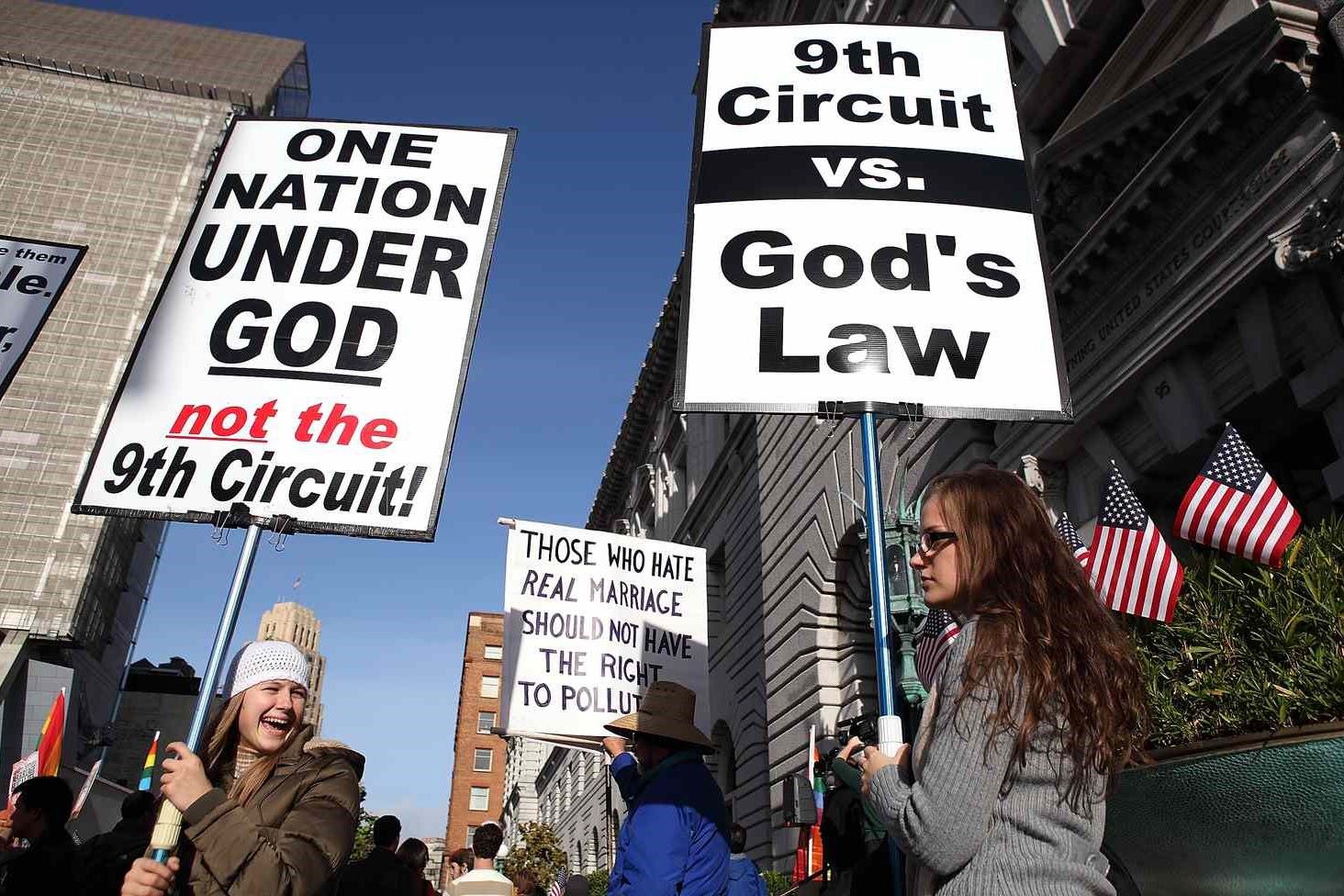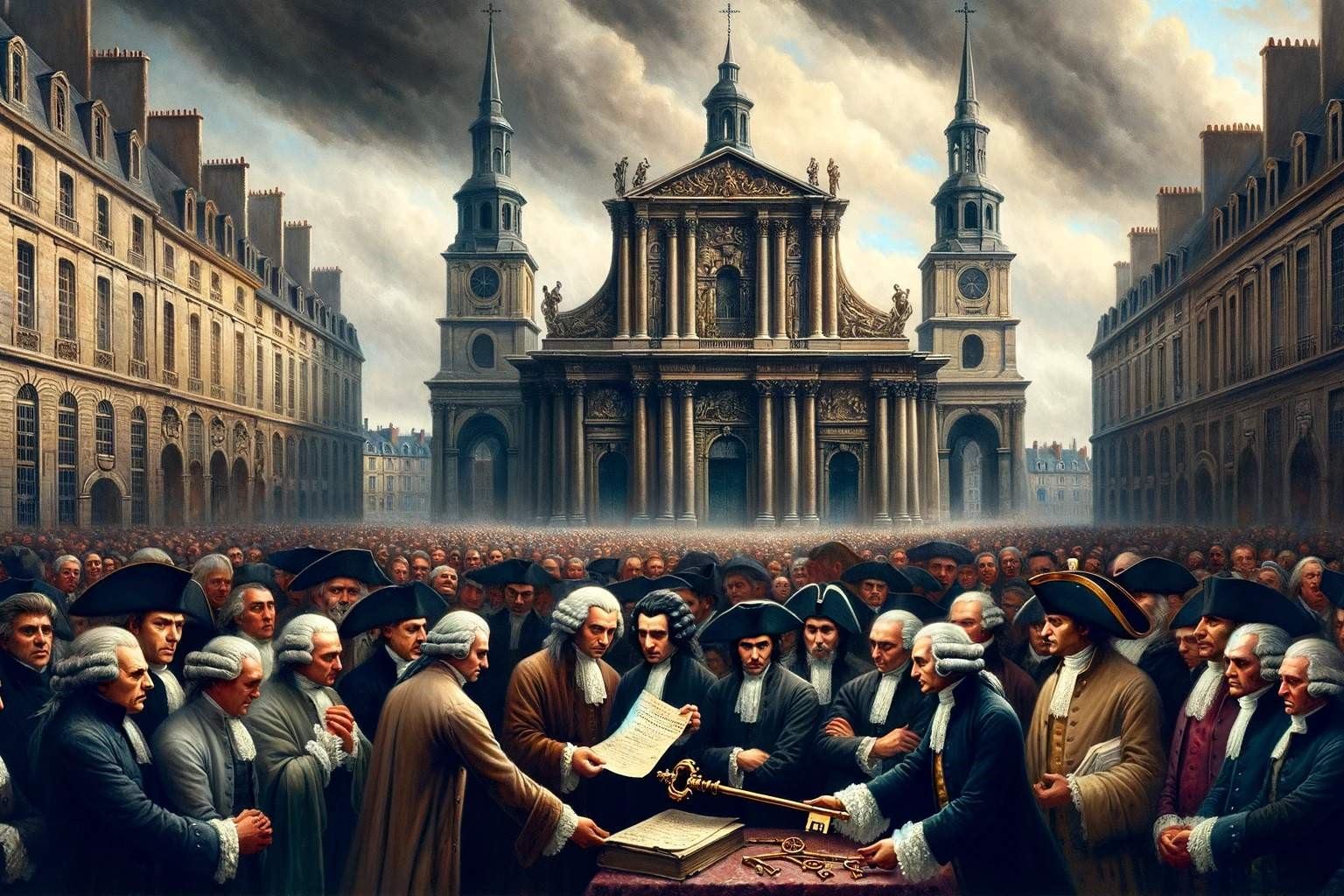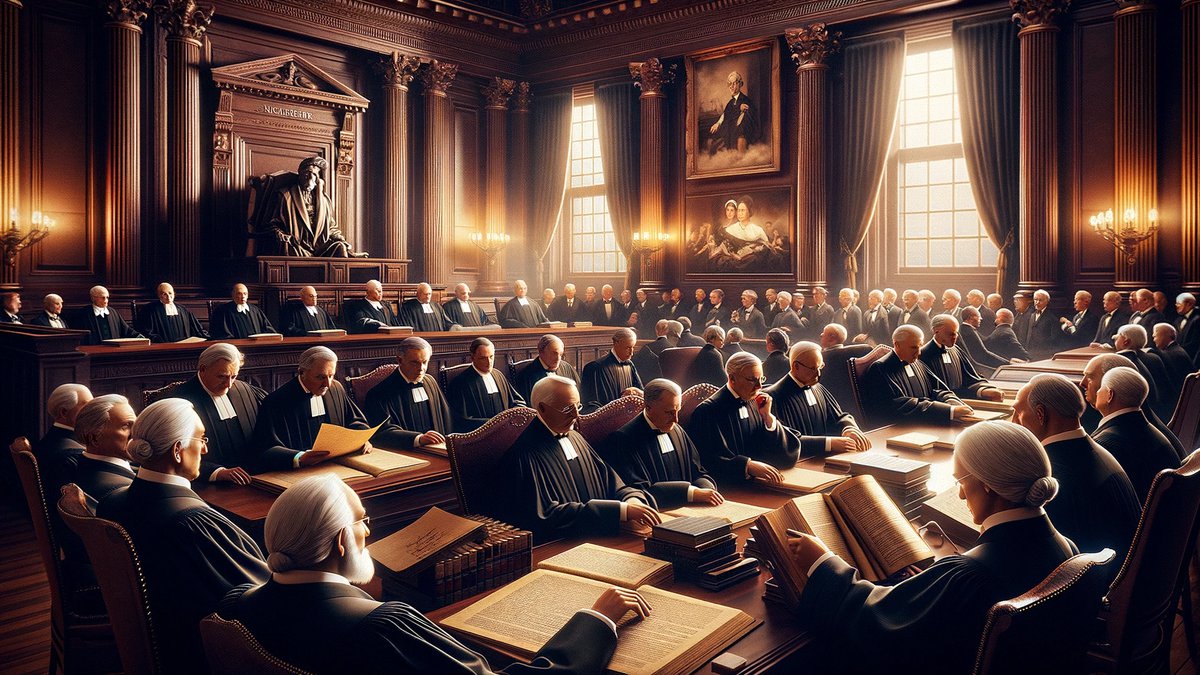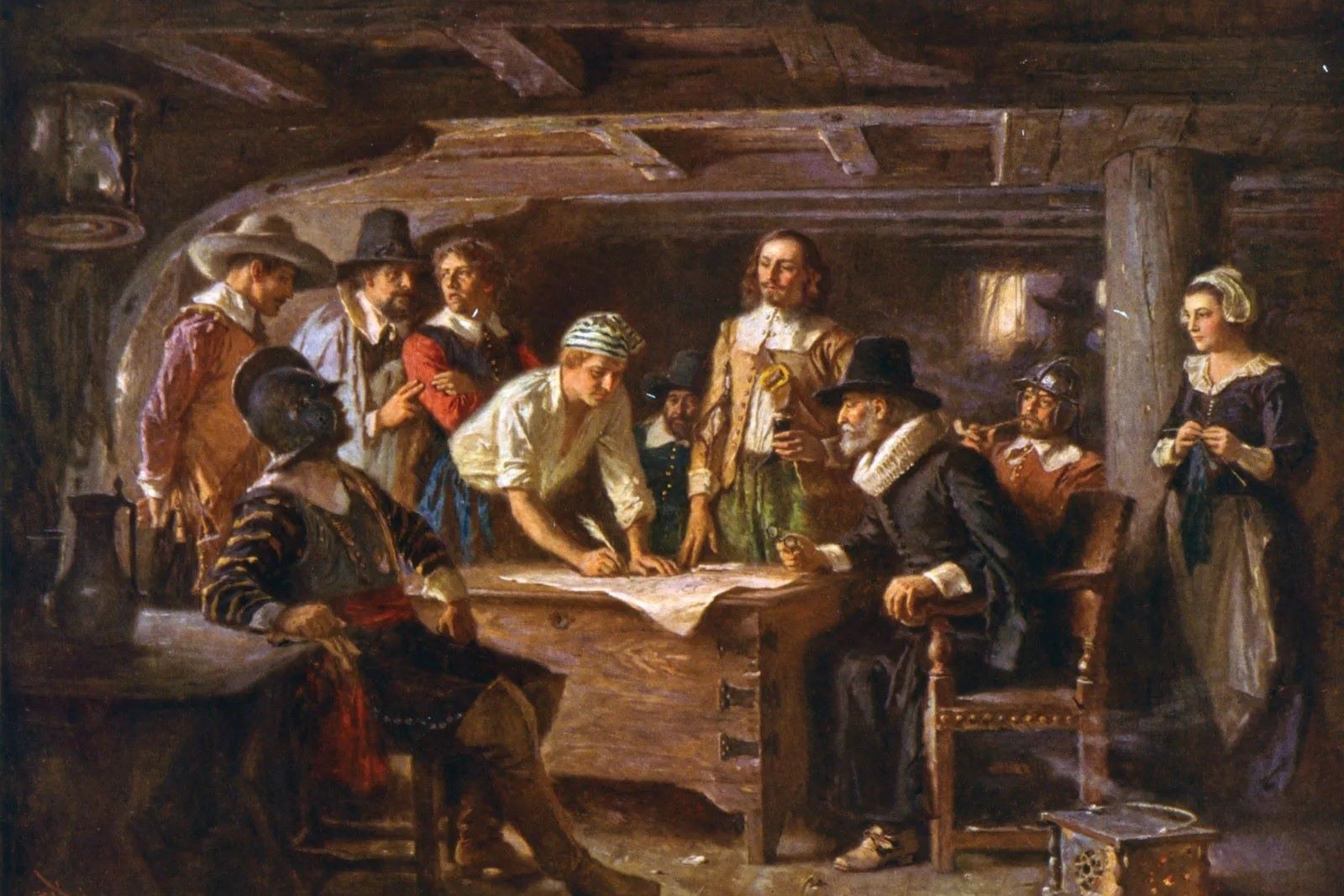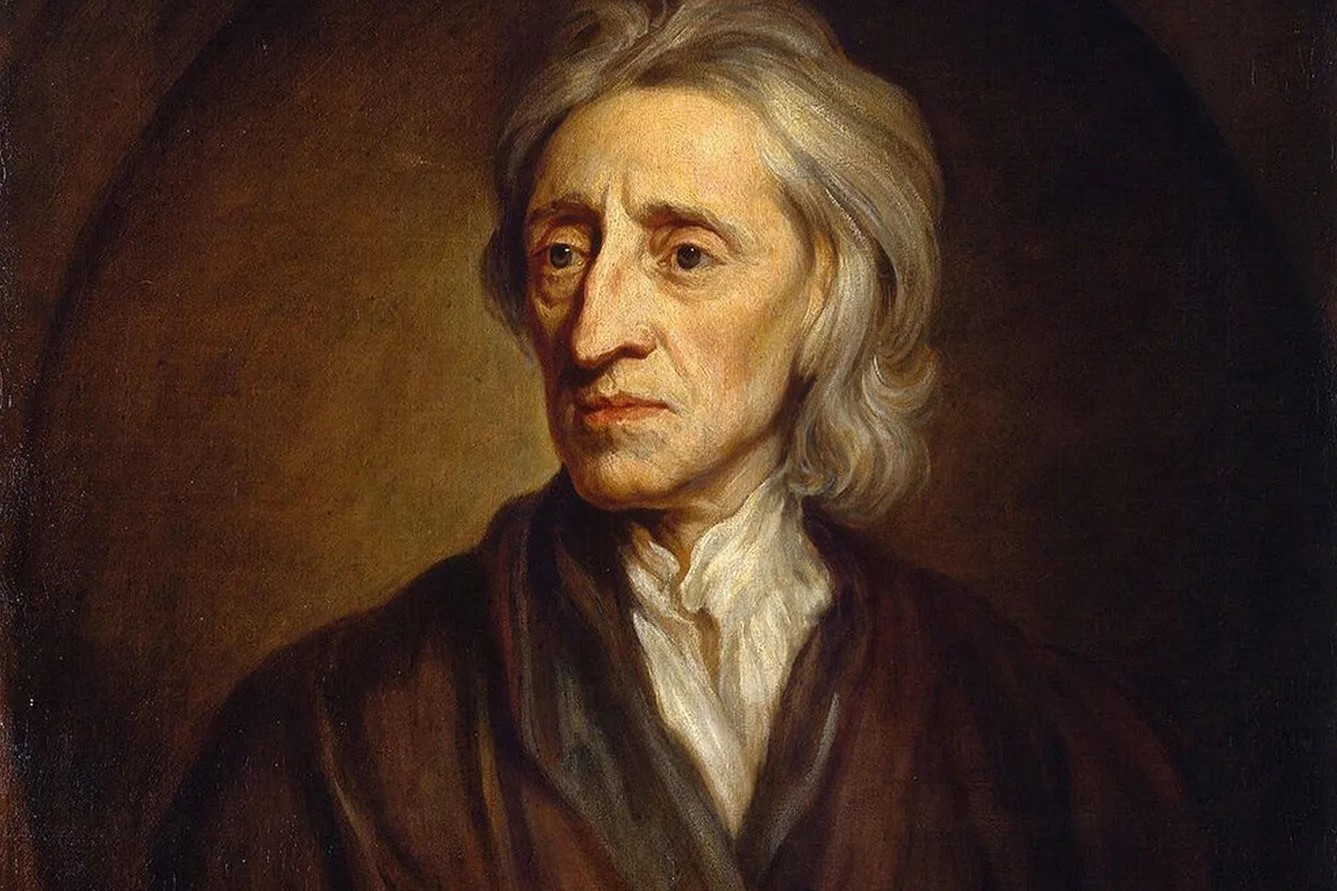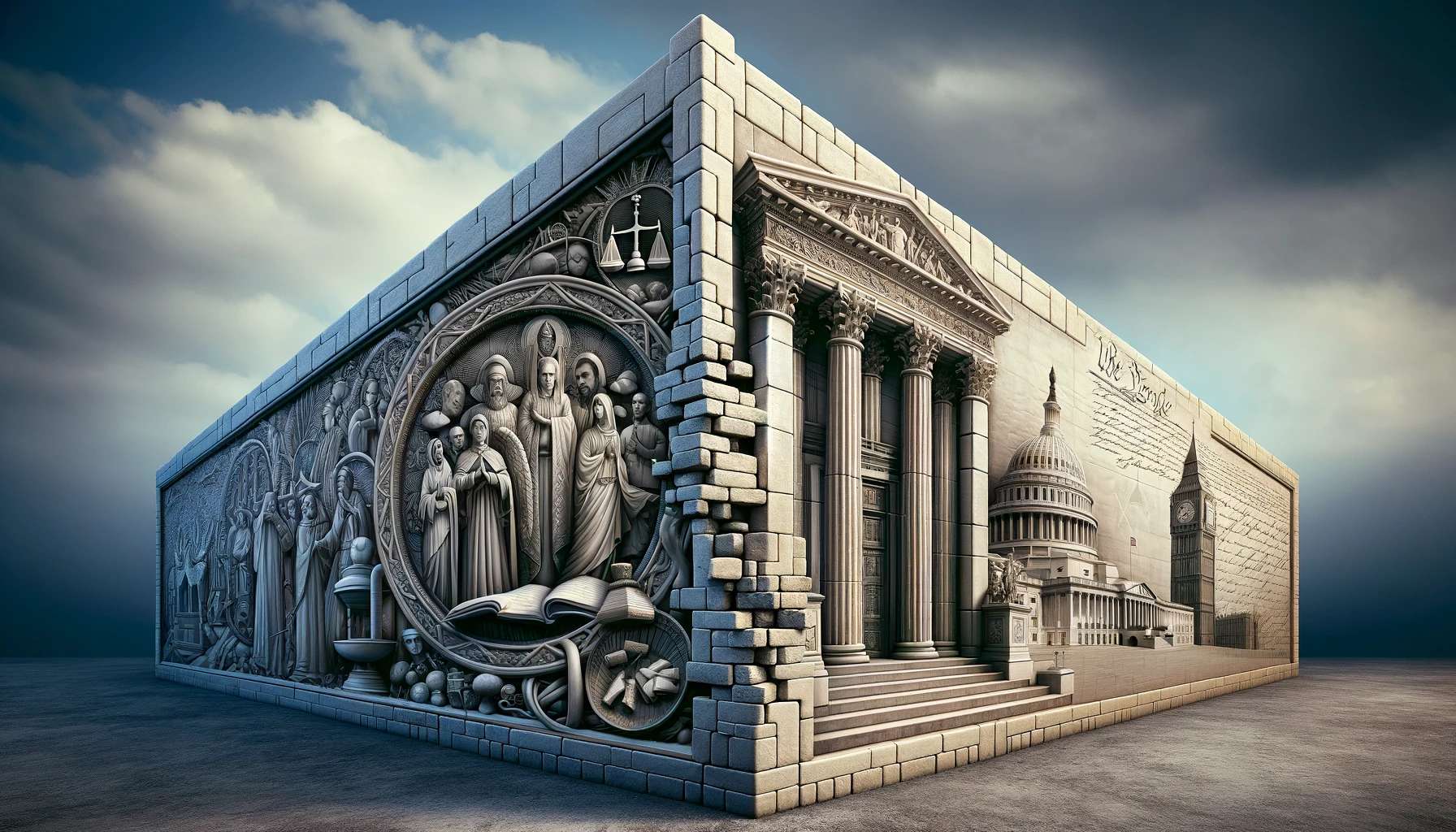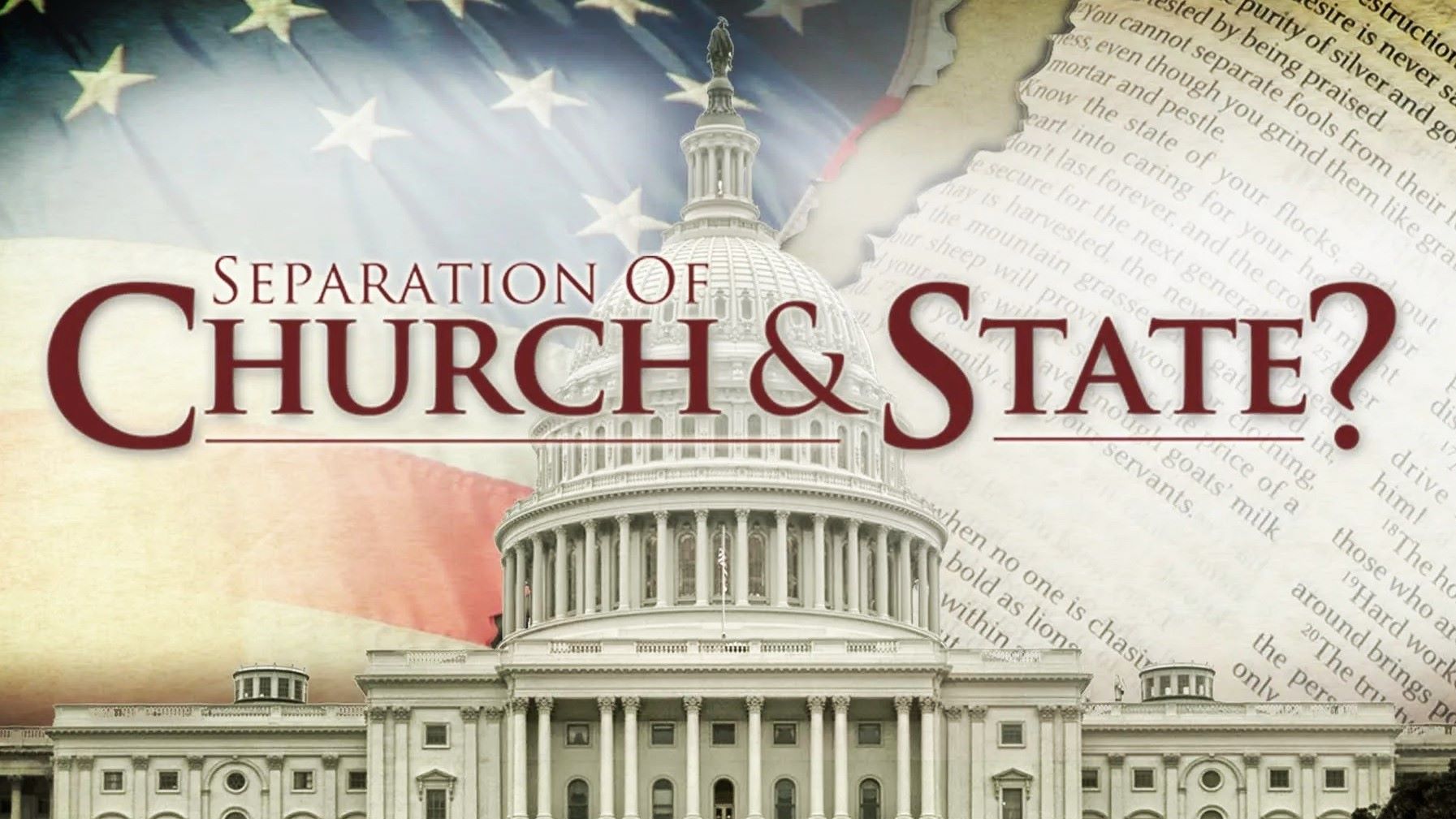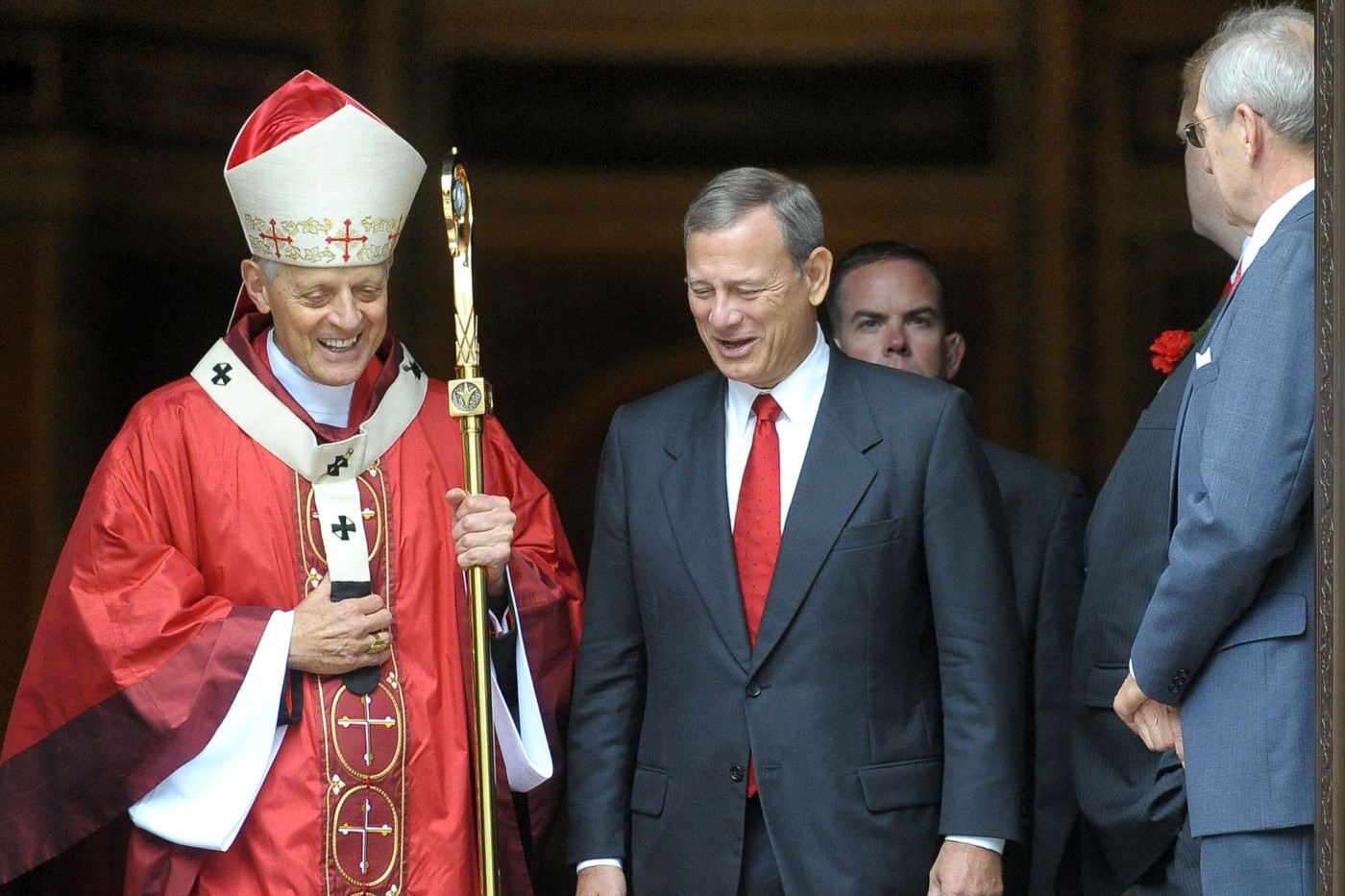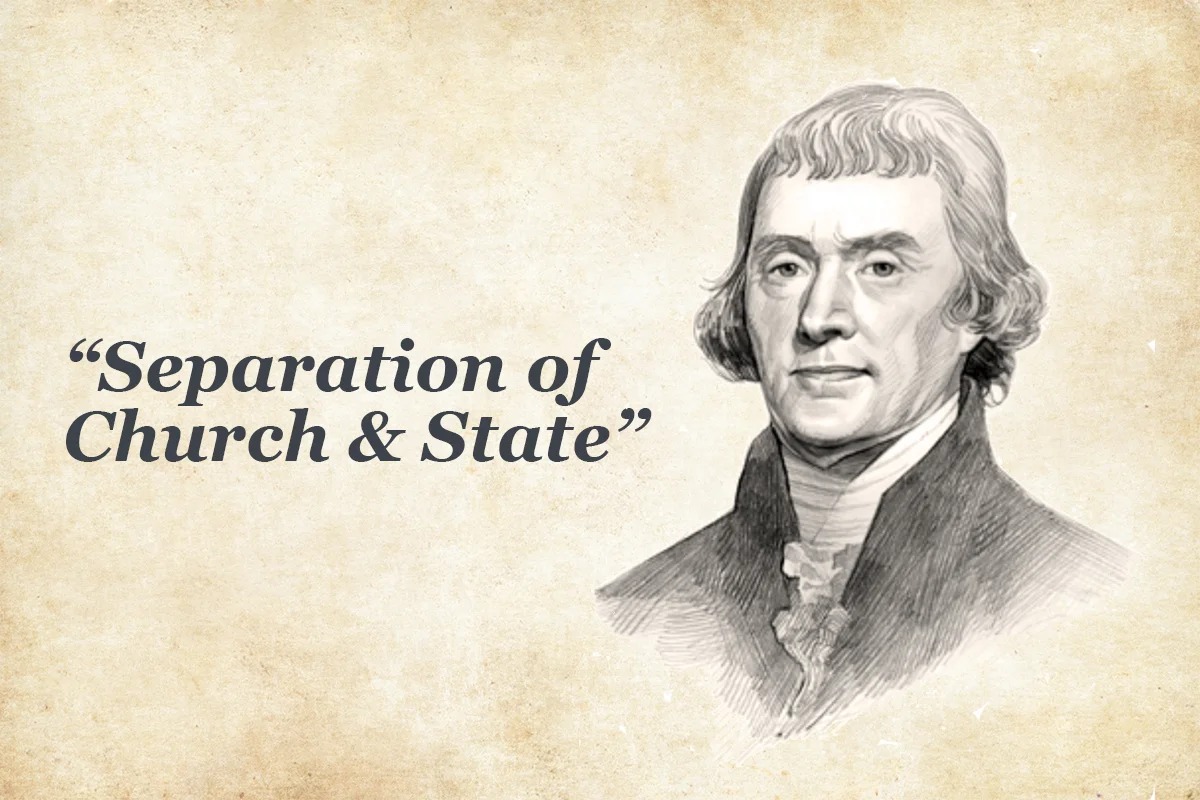Home>Theology and Spirituality>How Does The First Amendment Separate Church And State?


Theology and Spirituality
How Does The First Amendment Separate Church And State?
Published: February 11, 2024
Peter Smith, Editorial Director at Christian.net, combines deep insights into faith, politics, and culture to lead content creation that resonates widely. Awarded for his contributions to religious discourse, he previously headed a major organization for religious communicators, enhancing dialogue on faith's societal impacts.
Learn how the First Amendment separates church and state and its impact on theology and spirituality. Explore the historical and legal aspects of this fundamental principle.
(Many of the links in this article redirect to a specific reviewed product. Your purchase of these products through affiliate links helps to generate commission for Christian.net, at no extra cost. Learn more)
Table of Contents
Introduction
The separation of church and state is a fundamental principle that shapes the legal and societal landscape of the United States. Rooted in the First Amendment of the U.S. Constitution, this concept serves as a cornerstone of religious freedom and governmental neutrality. Understanding the historical context and legal interpretations of this principle is crucial for comprehending its impact on American society.
The First Amendment, ratified in 1791, includes two clauses that directly address the relationship between religion and government: the Establishment Clause and the Free Exercise Clause. These clauses form the basis for the separation of church and state, ensuring that the government neither establishes a national religion nor interferes with individuals' religious practices.
Throughout American history, the interpretation and application of these clauses have sparked numerous debates and legal battles. The Supreme Court has played a pivotal role in shaping the boundaries of religious expression within the public sphere and determining the extent of government involvement in religious affairs. As a result, the separation of church and state has been a subject of ongoing scrutiny and controversy, with implications for education, public policy, and individual rights.
By delving into the nuances of the Establishment and Free Exercise Clauses, as well as examining landmark Supreme Court decisions, we can gain a comprehensive understanding of how the separation of church and state has evolved over time. Moreover, exploring current debates and controversies surrounding this principle sheds light on its relevance in modern society.
In this article, we will explore the historical origins of the separation of church and state, the legal framework established by the First Amendment, and the ways in which this principle continues to shape American jurisprudence and public discourse. Through this exploration, we can appreciate the complexities and implications of this foundational concept in the context of a diverse and dynamic society.
The Establishment Clause
The Establishment Clause, a pivotal component of the First Amendment, serves as a safeguard against the government's endorsement or establishment of a national religion. This critical provision ensures that the state remains neutral in matters of religion, preventing the imposition of religious beliefs on individuals through governmental action. The historical backdrop of the Establishment Clause can be traced back to the early colonial period, where religious persecution and state-sanctioned religion were prevalent in Europe. The framers of the U.S. Constitution sought to create a society where individuals could practice their faith freely without fear of state interference or coercion.
The Establishment Clause has been the subject of extensive legal interpretation and debate, shaping the boundaries of religious expression in the public sphere. One of the most notable cases related to the Establishment Clause is Engel v. Vitale (1962), in which the Supreme Court ruled that state-sponsored prayer in public schools violated the constitutional principle of separation of church and state. This landmark decision underscored the government's obligation to maintain a neutral stance on religious matters, particularly within the context of public education.
Moreover, the Establishment Clause has been invoked in discussions surrounding the display of religious symbols on public property. Cases such as Lemon v. Kurtzman (1971) and Lynch v. Donnelly (1984) prompted the Supreme Court to establish a three-pronged test, known as the Lemon test, to evaluate whether a particular government action violates the Establishment Clause. This test examines whether the government's action has a secular purpose, whether its primary effect neither advances nor inhibits religion, and whether it avoids excessive entanglement with religion.
The Establishment Clause continues to be a cornerstone of religious freedom and governmental neutrality, influencing diverse areas of public life, including public ceremonies, government-funded programs, and religious accommodations in the workplace. As society grapples with evolving notions of pluralism and diversity, the Establishment Clause remains a vital instrument for upholding the separation of church and state and safeguarding individual liberties.
In essence, the Establishment Clause embodies the foundational commitment to religious freedom and underscores the imperative of maintaining a secular government that respects the autonomy of diverse religious beliefs and non-belief. Its enduring significance is evident in the ongoing legal and societal discourse surrounding the intersection of religion and governance, reflecting the dynamic and evolving nature of this fundamental constitutional principle.
The Free Exercise Clause
The Free Exercise Clause, a pivotal component of the First Amendment, safeguards individuals' rights to practice their chosen religion without governmental interference. This fundamental provision ensures that individuals have the freedom to worship, observe religious rituals, and adhere to their beliefs without facing discrimination or persecution from the state. The historical context of the Free Exercise Clause is rooted in the experiences of early settlers who sought refuge from religious persecution in Europe. The framers of the U.S. Constitution recognized the importance of protecting individuals' religious autonomy and ensuring that the government does not impede their spiritual practices.
Throughout American history, the Free Exercise Clause has been the subject of significant legal interpretation and precedent-setting cases. One landmark case that underscored the importance of this clause is Sherbert v. Verner (1963), in which the Supreme Court established a test to determine whether government actions infringe upon individuals' free exercise of religion. This test, known as the Sherbert Test, requires the government to demonstrate a compelling interest in restricting religious practices and to do so through the least restrictive means possible.
Furthermore, the Free Exercise Clause has been invoked in cases involving religious accommodations in the workplace, religious attire, and conscientious objections to certain laws or regulations. The Supreme Court's rulings in cases such as Employment Division v. Smith (1990) and Burwell v. Hobby Lobby Stores, Inc. (2014) have shaped the legal framework for evaluating the extent to which individuals can exercise their religious beliefs in various contexts.
The Free Exercise Clause continues to play a crucial role in safeguarding individuals' rights to religious expression and practice, particularly in a society characterized by religious diversity and pluralism. It serves as a bulwark against governmental overreach and ensures that individuals can live in accordance with their deeply held religious convictions without fear of state-sanctioned interference.
In essence, the Free Exercise Clause embodies the foundational commitment to religious liberty and underscores the imperative of protecting individuals' rights to worship and observe their faith without undue governmental constraints. Its enduring significance is evident in the ongoing legal and societal discourse surrounding religious freedom and individual autonomy, reflecting the dynamic and evolving nature of this fundamental constitutional principle.
Supreme Court Interpretations
The Supreme Court of the United States has played a pivotal role in shaping the interpretation and application of the Establishment and Free Exercise Clauses, thereby delineating the boundaries of the separation of church and state. Through landmark decisions and nuanced legal reasoning, the Court has elucidated the complexities of religious freedom, governmental neutrality, and the intersection of religion with public life.
One of the most influential cases in the realm of Supreme Court interpretations is Lemon v. Kurtzman (1971), which established the Lemon test to evaluate whether a particular government action violates the Establishment Clause. This test, comprising three prongs, has been instrumental in guiding judicial scrutiny of laws and policies concerning religion. The Court's delineation of the Lemon test underscored the importance of maintaining a secular purpose, avoiding the advancement or inhibition of religion, and preventing excessive entanglement between government and religious institutions.
Moreover, the Supreme Court's decision in Employment Division v. Smith (1990) significantly impacted the interpretation of the Free Exercise Clause. The Court held that neutral and generally applicable laws could be applied to religious practices without violating the Free Exercise Clause, marking a shift from previous interpretations that afforded greater protection to religious exercise. This decision prompted legislative responses at both the federal and state levels, reflecting the profound implications of Supreme Court interpretations on religious freedom and individual rights.
In addition to these seminal cases, the Supreme Court has addressed a myriad of issues related to the separation of church and state, including prayer in public schools, religious displays on government property, and exemptions based on religious beliefs. Each decision has contributed to the evolving jurisprudence surrounding religious liberty and governmental constraints, reflecting the Court's commitment to balancing the protection of religious expression with the maintenance of a secular public sphere.
The Supreme Court's interpretations of the Establishment and Free Exercise Clauses have engendered robust legal discourse and societal reflection, underscoring the dynamic nature of these constitutional principles. As the Court continues to deliberate on cases at the intersection of religion and governance, its interpretations will undoubtedly shape the contours of religious freedom and governmental neutrality for generations to come.
Current Debates and Controversies
The separation of church and state remains a subject of ongoing debates and controversies in contemporary American society. One prominent area of contention revolves around the intersection of religious beliefs and public policy, particularly concerning issues such as LGBTQ+ rights, reproductive rights, and the accommodation of religious practices in the public sphere. These debates often center on the delicate balance between upholding individual liberties and ensuring that governmental actions remain neutral with respect to diverse religious and non-religious perspectives.
In recent years, conflicts have arisen over the scope of religious exemptions from anti-discrimination laws and healthcare mandates. The tension between protecting LGBTQ+ individuals from discrimination and respecting religious convictions has sparked heated discussions at both the legislative and judicial levels. Similarly, debates surrounding reproductive rights, including access to contraception and abortion services, have underscored the complexities of navigating religiously informed moral stances within the realm of public policy.
Moreover, the accommodation of religious practices in public spaces, educational institutions, and the workplace has been a source of contention. Discussions on prayer in public schools, the display of religious symbols on government property, and religious attire in professional settings have raised questions about the boundaries of religious expression in the public sphere and the potential influence of government on matters of faith.
The rise of diverse religious and non-religious demographics has further amplified these debates, prompting reflections on how to uphold the principles of religious freedom and governmental neutrality in a pluralistic society. As the United States continues to grapple with shifting demographics and evolving cultural norms, the nuances of accommodating diverse religious beliefs while maintaining a secular government have become increasingly salient.
Furthermore, the impact of social and technological advancements has introduced new dimensions to the debates surrounding the separation of church and state. Issues such as the role of religion in digital spaces, the taxation of religious institutions, and the use of religious rhetoric in political discourse have sparked multifaceted discussions about the boundaries of religious influence in the public domain.
These ongoing debates and controversies underscore the dynamic and multifaceted nature of the separation of church and state, reflecting the evolving landscape of religious freedom, individual rights, and governmental responsibilities in a diverse and pluralistic society. As these discussions continue to unfold, they illuminate the enduring relevance and complexity of the constitutional principles enshrined in the First Amendment.
Conclusion
The separation of church and state, enshrined in the Establishment and Free Exercise Clauses of the First Amendment, stands as a testament to the foundational principles of religious freedom and governmental neutrality in the United States. Throughout history, these constitutional provisions have served as bulwarks against the imposition of state-sanctioned religion and the infringement upon individuals' rights to practice their chosen faith. The intricate tapestry of legal interpretations, landmark Supreme Court decisions, and ongoing debates surrounding this principle underscores its enduring significance and relevance in contemporary American society.
As the nation continues to navigate complex and multifaceted debates at the intersection of religion and governance, the principles encapsulated in the Establishment and Free Exercise Clauses remain essential for upholding individual liberties and preserving the secular nature of the government. The delicate balance between respecting diverse religious beliefs and ensuring that governmental actions remain impartial with regard to matters of faith underscores the nuanced challenges inherent in maintaining the separation of church and state.
Moreover, the evolving landscape of religious diversity, cultural pluralism, and technological advancements necessitates ongoing reflection on how to navigate the complexities of accommodating diverse religious beliefs while upholding the principles of religious freedom and governmental neutrality. The dynamic nature of these discussions reflects the evolving societal norms and the imperative of ensuring that the constitutional principles enshrined in the First Amendment continue to resonate with the diverse tapestry of American society.
In essence, the separation of church and state embodies the enduring commitment to fostering a society where individuals can practice their faith freely, devoid of governmental coercion or endorsement of specific religious beliefs. The ongoing legal and societal discourse surrounding this principle serves as a testament to the nation's dedication to upholding individual rights, fostering religious pluralism, and maintaining a government that remains neutral in matters of faith.
As the United States continues to grapple with the complexities of religious freedom, individual rights, and the role of religion in public life, the principles of the Establishment and Free Exercise Clauses will undoubtedly remain at the forefront of legal deliberations, societal reflections, and the ongoing pursuit of a more just and inclusive society. The enduring legacy of these constitutional provisions underscores their pivotal role in shaping the fabric of American democracy and upholding the fundamental tenets of religious liberty and governmental neutrality.
